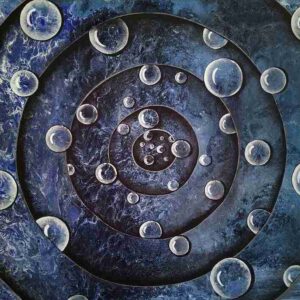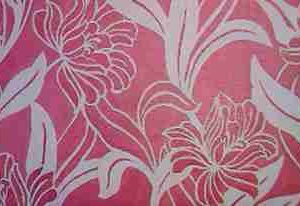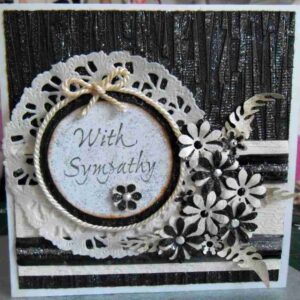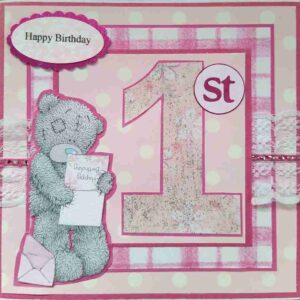Circle Mania-1
A Journey Through Abstract Art and Its Symbolism
Circle Mania-1 evokes a sense of movement, chaos, and infinite possibility, blending both the geometric and the abstract. As a powerful format in contemporary art, the triptych divides a single narrative or theme into three interconnected canvases, allowing the artist to explore complex ideas and emotions in a dynamic, multifaceted way. Art, in this context, becomes a medium of expression that transcends boundaries, offering a deeper glimpse into the vastness of human thought and feeling.
In this essay, we will delve into the fascinating nature of Circle Mania-1, an abstract work of art by Lyn Potrykus, commissioned by Mrs. S. Grant in 2007. Through its exploration of misshapen circles, metallic cerise and black acrylics, and the triptych format, Circle Mania-1 challenges traditional representations of symmetry, order, and chaos. We will also look at the historical context of the triptych format, its evolution, and why Potrykus’s Circle Mania-1 stands out in the world of contemporary art.
The Triptych Format, Tradition Meets Innovation
The term “triptych” comes from the Greek words tri (three) and ptyche (fold), referring to a work of art that is divided into three panels. Historically, triptychs were most famously used in religious art, particularly in Christian traditions. They served as altarpieces, with each panel depicting different aspects of a religious story or theme, such as the Annunciation, Crucifixion, or the Last Judgment.
One of the most renowned examples of this tradition is Hieronymus Bosch’s The Garden of Earthly Delights. This iconic triptych from the late 15th century is filled with surreal imagery and fantastical creatures, using the triptych format to explore the human experience of sin, temptation, and paradise. The central panel represents a vision of earthly pleasures, while the left and right panels portray Edenic bliss and hellish damnation. Through Bosch’s triptych, we are drawn into a complex narrative that speaks to the human condition.
However, as time progressed, the triptych format evolved, moving away from its strictly religious connotations. In modern art, the triptych began to represent a wider range of themes, from personal identity and abstract thought to political and social commentary. Circle Mania-1 by Potrykus takes this evolution further, using the triptych not to convey a linear narrative but to explore form, texture, and colour in an abstract yet emotionally charged composition.
The Artist Behind Circle Mania-1
Potrykus, an artist known for her bold and experimental approach to abstract painting, was commissioned by Mrs. S. Grant in 2007 to create a work that would engage viewers on both a visual and psychological level. Potrykus’s approach to Circle Mania-1 is characteristic of her unique style, which often blends geometric elements with organic abstraction. Her use of the misshapen circle motif plays a key role in challenging our perception of symmetry and balance, reflecting the unpredictability of the human experience.
The choice of colour also plays a pivotal role in Circle Mania-1. The metallic cerise (a shimmering, metallic pink) and black acrylics used in the painting not only evoke a sense of contrast and drama but also speak to the artist’s ability to manipulate texture and light. Cerise, a colour often associated with both opulence and sensuality, contrasts sharply with the depth and mystery of black. The resulting dynamic between the two colours creates a palpable tension that invites the viewer to explore the depths of the painting’s emotional and psychological landscape.
Through the use of misshapen circles, Potrykus deconstructs the traditional notion of perfect form, replacing order with chaos and symmetry with discord. This disorientation reflects the chaos inherent in life itself, the random moments of joy, confusion, triumph, and sorrow. By placing these disordered shapes against the starkness of black and the shimmer of cerise, Potrykus forces us to confront the tension between control and freedom, expectation and surprise.
The Symbolism of Circles in Art
The circle has been a symbol of wholeness and infinity throughout history. In many cultures, it represents unity, the cosmos, and the cyclical nature of life. Yet, in Circle Mania-1, the circles are deliberately misshapen, fractured, and off-centre. This deliberate distortion challenges the traditional symbolism of the circle, suggesting that even the most basic elements of existence can be deconstructed, questioned, and reinterpreted.
One might think of the misshapen circle as a metaphor for the human experience, constantly shifting, evolving, and at times, unpredictable. Just as the circle is the most basic and universal shape, its imperfections in Circle Mania-1 speak to the complexity of identity and existence. Rather than offering a sense of calm wholeness, Potrykus’s circles invite us to explore the messy, imperfect nature of life itself. These imperfect forms remind us that perfection is not an end goal but a fleeting ideal, forever slipping away as we continue to change and grow.
The Triptych Structure. Breaking the Narrative
A traditional triptych often presents a narrative in three parts, beginning, middle, and end. However, Potrykus’s Circle Mania-1 does not follow this convention. Instead, the three panels work together to create a continuous visual and emotional experience, one that cannot be neatly divided into phases. The three parts of the painting echo each other, creating a sense of rhythm and flow, yet each panel also stands on its own, offering different variations of form, colour, and texture.
The first panel of Circle Mania-1 features a series of chaotic, overlapping circles painted in metallic cerise, some more defined than others, against a black backdrop. These circles seem to spill out from the edges of the canvas, suggesting motion and energy, as if they are emerging from some unseen force. The use of metallic paint in this panel creates a sense of light and reflection, as if the circles themselves are glowing from within. This panel sets the stage for the visual chaos that follows.
The second panel continues the theme of movement and chaos but introduces more jagged and fragmented circles. The shapes are less defined here, almost as if they are dissolving into the blackness of the canvas. The cerise tones become more muted in this panel, with areas of pure black dominating the space. The texture of the paint seems to shift as well, with brushstrokes that are rougher and more gestural, reflecting a sense of urgency and instability.
In the third and final panel, Potrykus introduces a sense of resolution, but it is a resolution that is anything but simple. The circles here are smaller and more concentrated, clustered together in clusters of metallic cerise. While there is still an underlying sense of disorder, this panel feels more controlled, as if the chaos is beginning to find a pattern, or perhaps, accepting that chaos is the pattern itself. The interplay between cerise and black in this panel feels more harmonious, suggesting that even in the most tumultuous of moments, there can be a fleeting sense of balance.
Together, the three panels of Circle Mania-1 create a dynamic, evolving visual experience. While they do not follow a linear narrative, they engage the viewer in a journey through emotion, colour, and form. This non-linear approach allows the viewer to interpret the painting on a more personal level, drawing from their own experiences of chaos, harmony, and transformation.
A Personal Interpretation of Circle Mania-1
To fully appreciate Circle Mania-1, it is important to consider the emotional and psychological resonance of the work. Potrykus’s use of colour and form evokes a range of emotional responses. The metallic cerise, with its reflective quality, is often associated with both allure and fragility. It draws the viewer in, almost hypnotically, before revealing the fractured nature of the circles. The use of black, on the other hand, suggests mystery, depth, and the unknown. Together, these two colours create a tension that mirrors the emotional complexity of the human psyche.
The misshapen circles can be seen as symbols of the fragmented self, the parts of us that don’t always fit together neatly. In a world that often demands perfection and conformity, Circle Mania-1 challenges this expectation by celebrating the beauty of imperfection. The circles seem to embrace their flaws, their brokenness, and in doing so, they remind us of our own ability to find strength in our vulnerabilities.
For some, the triptych format might evoke feelings of disorientation, as the fragmented nature of the panels suggests that there is no single truth or resolution. The work becomes an invitation to explore the grey areas of life, to embrace the contradictions, and to find meaning in the uncertainty. In this way, Circle Mania-1 becomes a mirror for the viewer’s own emotional landscape, a reflection of the complex, ever-changing nature of identity, experience, and perception.
Conclusion
In conclusion, Circle Mania-1 by Potrykus is more than just an abstract work of art, it is a visual exploration of chaos, harmony, and the imperfection of the human experience. Through its use of misshapen circles, metallic cerise, and black acrylics, Potrykus challenges our conventional understanding of form, beauty, and balance. The triptych format, far from offering a linear narrative, serves as a dynamic canvas for exploring the emotional and psychological journey of the self.
In a world that often seeks to impose order on chaos, Circle Mania-1 serves as a reminder that sometimes the most profound truths are found in the most unexpected places. The work invites us to embrace imperfection, to celebrate the fluidity of identity, and to find meaning in the spaces between order and disorder. By embracing the misshapen circle, Potrykus offers us a new way to see ourselves and the world around us, as incomplete, yet whole in our imperfection.
As with all great art, Circle Mania-1 leaves us with more questions than answers, encouraging us to look deeper, think more critically, and see the beauty in the brokenness. Through its abstract forms and shimmering colours, Circle Mania-1 challenges us to confront the complexities of life, identity, and emotion, and in doing so, offers us a new way of seeing the world, one that embraces both chaos and clarity in equal measure.
You can commission a custom art piece in your choice of colour (subject to availability), adding a personal touch that reflects your unique story and experiences. Each artwork is carefully crafted, ensuring that no two are ever the same, just like the moments they capture. This process not only creates a meaningful connection between the artist and the patron but also highlights the individuality of each person’s journey through time.
Commissions Form The more information you provide, the better we can tailor the piece to your vision. Please note that commissions typically take between 2 to 6 weeks to complete.
Thank you for looking
Check out my other works here at https://lyn-5818.canvy.art/






Ashli –
I like this website very much, Its a very nice place
to read and obtain info.